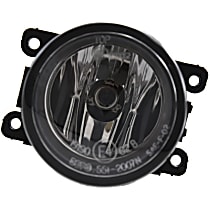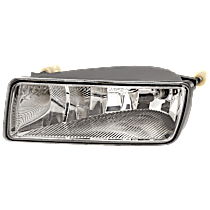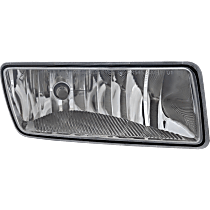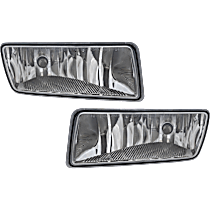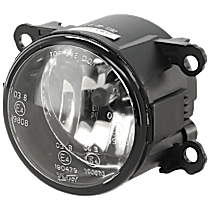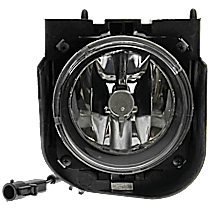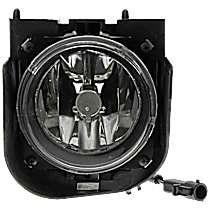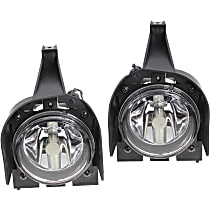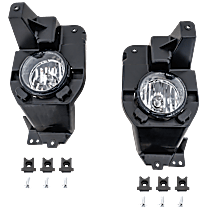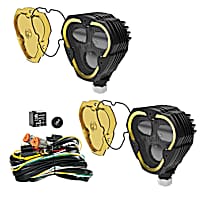{
"lazyNodes": false,
"abFitnotesFlag": false,
"abCrawlReviews": false,
"productOptionsCookie": false,
"orderDelayFlag": false,
"skipSessionCookie": false,
"covidMessage": false,
"fullTitleCookie": false,
"nrLoggerCookie": false,
"checkoutReviewCookie": false,
"productOptionSeqCookie": false,
"maintenanceFlag": false,
"bufferETACookie": false,
"multiShippingDiscountFlag": false,
"newFitmentFlag": false,
"surveyOptInFlag": false,
"crossSellFlag": false,
"skuMappingFlag": false,
"paySplitCookie": false,
"callDisableFlag": false,
"zipPaymentFlag": "u",
"hassleFreeReturn": false,
"lifetimeReplacement": false,
"cpn_off": false
}Ford Explorer Fog Lights
Shop Catalog
![]() WARNING: This product can expose you to chemicals including Chromium, which is known to the State of California to cause cancer and birth defects or other reproductive harm. For more information go to www.P65Warnings.ca.gov.
WARNING: This product can expose you to chemicals including Chromium, which is known to the State of California to cause cancer and birth defects or other reproductive harm. For more information go to www.P65Warnings.ca.gov.
![]() WARNING: This product can expose you to chemicals including Chromium, which is known to the State of California to cause cancer and birth defects or other reproductive harm. For more information go to www.P65Warnings.ca.gov.
WARNING: This product can expose you to chemicals including Chromium, which is known to the State of California to cause cancer and birth defects or other reproductive harm. For more information go to www.P65Warnings.ca.gov.
![]() WARNING: This product can expose you to chemicals including Chromium, which is known to the State of California to cause cancer and birth defects or other reproductive harm. For more information go to www.P65Warnings.ca.gov.
WARNING: This product can expose you to chemicals including Chromium, which is known to the State of California to cause cancer and birth defects or other reproductive harm. For more information go to www.P65Warnings.ca.gov.
![]() WARNING: This product can expose you to chemicals including Chromium, which is known to the State of California to cause cancer and birth defects or other reproductive harm. For more information go to www.P65Warnings.ca.gov.
WARNING: This product can expose you to chemicals including Chromium, which is known to the State of California to cause cancer and birth defects or other reproductive harm. For more information go to www.P65Warnings.ca.gov.
![]() WARNING: This product can expose you to chemicals including Chromium, which is known to the State of California to cause cancer and birth defects or other reproductive harm. For more information go to www.P65Warnings.ca.gov.
WARNING: This product can expose you to chemicals including Chromium, which is known to the State of California to cause cancer and birth defects or other reproductive harm. For more information go to www.P65Warnings.ca.gov.
![]() WARNING: This product can expose you to chemicals including Chromium, which is known to the State of California to cause cancer and birth defects or other reproductive harm. For more information go to www.P65Warnings.ca.gov.
WARNING: This product can expose you to chemicals including Chromium, which is known to the State of California to cause cancer and birth defects or other reproductive harm. For more information go to www.P65Warnings.ca.gov.
![]() WARNING: This product can expose you to chemicals including Chromium, which is known to the State of California to cause cancer and birth defects or other reproductive harm. For more information go to www.P65Warnings.ca.gov.
WARNING: This product can expose you to chemicals including Chromium, which is known to the State of California to cause cancer and birth defects or other reproductive harm. For more information go to www.P65Warnings.ca.gov.
![]() WARNING: This product can expose you to chemicals including Chromium, which is known to the State of California to cause cancer and birth defects or other reproductive harm. For more information go to www.P65Warnings.ca.gov.
WARNING: This product can expose you to chemicals including Chromium, which is known to the State of California to cause cancer and birth defects or other reproductive harm. For more information go to www.P65Warnings.ca.gov.
![]() WARNING: This product can expose you to chemicals including Chromium, which is known to the State of California to cause cancer and birth defects or other reproductive harm. For more information go to www.P65Warnings.ca.gov.
WARNING: This product can expose you to chemicals including Chromium, which is known to the State of California to cause cancer and birth defects or other reproductive harm. For more information go to www.P65Warnings.ca.gov.
![]() WARNING: This product can expose you to chemicals including Chromium, which is known to the State of California to cause cancer and birth defects or other reproductive harm. For more information go to www.P65Warnings.ca.gov.
WARNING: This product can expose you to chemicals including Chromium, which is known to the State of California to cause cancer and birth defects or other reproductive harm. For more information go to www.P65Warnings.ca.gov.
![]() WARNING: This product can expose you to chemicals including Chromium, which is known to the State of California to cause cancer and birth defects or other reproductive harm. For more information go to www.P65Warnings.ca.gov.
WARNING: This product can expose you to chemicals including Chromium, which is known to the State of California to cause cancer and birth defects or other reproductive harm. For more information go to www.P65Warnings.ca.gov.
![]() WARNING: This product can expose you to chemicals including Chromium, which is known to the State of California to cause cancer and birth defects or other reproductive harm. For more information go to www.P65Warnings.ca.gov.
WARNING: This product can expose you to chemicals including Chromium, which is known to the State of California to cause cancer and birth defects or other reproductive harm. For more information go to www.P65Warnings.ca.gov.
![]() WARNING: This product can expose you to chemicals including Chromium, which is known to the State of California to cause cancer and birth defects or other reproductive harm. For more information go to www.P65Warnings.ca.gov.
WARNING: This product can expose you to chemicals including Chromium, which is known to the State of California to cause cancer and birth defects or other reproductive harm. For more information go to www.P65Warnings.ca.gov.
![]() WARNING: This product can expose you to chemicals including Chromium, which is known to the State of California to cause cancer and birth defects or other reproductive harm. For more information go to www.P65Warnings.ca.gov.
WARNING: This product can expose you to chemicals including Chromium, which is known to the State of California to cause cancer and birth defects or other reproductive harm. For more information go to www.P65Warnings.ca.gov.
![]() WARNING: This product can expose you to chemicals including Chromium, which is known to the State of California to cause cancer and birth defects or other reproductive harm. For more information go to www.P65Warnings.ca.gov.
WARNING: This product can expose you to chemicals including Chromium, which is known to the State of California to cause cancer and birth defects or other reproductive harm. For more information go to www.P65Warnings.ca.gov.
Top Rated Products
Product Questions & Answers
Customer Guides
Diagnosing Your Broken Ford Explorer Fog Lights
Your fog lights are supposed to be mounted below the headlights of your Ford Explorer. It should give off a bar-shaped beam of light so that you can see the road better during poor visibility conditions. This light has a sharp cutoff at the top so you don't blind yourself or the drivers in front of you. However, you might find it difficult to get all of these benefits if your Ford Explorer fog lights don't light up. So, you'll need to check the different components that can cause this to find the ones that are in need of a replacement or a repair.
A broken fuse
Just like many of the other electrical equipment on your Ford Explorer, a broken fuse can be the reason why your fog lights have stopped working. So, you can start your investigation by locating your fuse box and using a plastic fuse puller to remove the fog light fuse. Afterwards, you'll need to inspect it for any signs of damaged wiring. If you find any, replace the fog light fuse with a new one and make sure that it fits perfectly inside the box. Then, turn on your fog lights and see if this solves the problem.
A broken fog light switch and relay
If the fuse is fine or if you've already replaced it and the fog lights still don't work, you'll need to turn your attention to the fog light switch and next. You can test if this is the faulty component by using a test light. Just connect the test light's jumper wire with the positive battery cable and then locate the fog light switch to check for connectivity at its various pins. If the test light doesn't turn on, then you have a problem with the switch. If it does turn on, you'll need to check the fog light relay. Make sure that you pay attention to any clicking sounds while doing the test. If you hear the clicks, then your relay is fine. If you don't hear the clicks, then your relay has failed and it will need replacing.
A broken bulb or wiring
If you've already ruled out the fuse, switches, and relays, as the broken components of your Ford Explorer fog lights; then you'll need to check out their bulbs and wiring for any problems. To do so, you'll need to use the test light on them. Start by taking out the old bulb and then stripping a bit of the insulation off the wiring harness. Then press the light against this area to see if it lights up. If it doesn't, then you'll need to have the wiring replaced by the experts in a service center. If the test light does light up, then the problem was with the old bulb. Install a new one in its place and you can be on your merry way.
Fog lights can help navigate the road even when the weather is bad. But, you may not be using your Ford Explorer fog lights as well as you should or could be. You need to know how to position these lights correctly and when to use them so that you can drive your SUV without blinding the drivers in front of you and annoying them. Knowing how to aim your lights and choosing a bulb color that works for you will also enable you to see the road better.
Use your fog lights sparingly.
You don't need to turn on your fog lights whenever you turn on your headlights. Unless the weather is really bad and you're finding it hard to see because of the rain, fog, dust, or snow, don't turn them on. Avoid using them during dry weather as a sort of dipped-beam headlight because they can affect the ability of other drivers to look at their rear-view mirrors or even at the road in front of them.
Adjust the aim of your fog lights.
You don't have to blind the drivers in front of you with your bright fog lights because you can actually adjust them with the help of a solid-surfaced wall. Just make sure that you have a fuel tank that's half-filled with gas as well as tires that are properly inflated before parking your car 25 feet away from the wall. Then, turn on your regular headlights and look at the wall to figure out the location of the center of these two lights. Use a piece of tape to mark this center. Afterwards, turn off your headlights and turn on your fog lights. Position them so that the top of their beams falls about four inches lower than where the tape is. Make sure that your Ford Explorer fog lights are only facing forwards and not tilted to the left or the right.
Choose the color of your fog lights.
People used to believe that fog lights should be yellow because white-colored lights disperse as the hit the water vapor molecules that make up a fog. This means that they thought that white fog lights make it harder for drivers to see what's happening when it's foggy. But, this idea may not be scientifically accurate since the water vapor molecules aren't big enough for dispersion to occur. Essentially, you can choose whatever color works best for you. You can go for Ford Explorer fog lights in white, amber, blue, or even red. Just make sure that they actually help you see in bad weather.
What makes the fog light different from the headlight?
Like headlights, fog lights produce a beam of light that's pointed in front of the car. However, the beam fog lights produce have a wider, rectangular shape with a sharp horizontal cutoff and minimal upward light on top of it. Used in conjunction with headlights, this configuration enables the fog lights to weigh the overall beam pattern towards the foreground. This way, even if there is enough amount of upward stray light from the headlights to create the distinctive glare-back from fog, the fog light ensures that there is more foreground light, giving the driver enhanced vision of the road.
Why is it necessary for fog lights to have a yellow hue?
While there are no strict rules regarding the use of fog lights of various colors, yellow has been widely documented to be more effective to punching through fog compared to other colors. This is because white and other colors refract through fog in unpredictable ways, illuminating the area in front of the vehicle like a bright blank screen. On the other hand, yellow light, which has a long wavelength and high sensitivity to the human eye, refracts in only one direction. This enables yellow light to cut through and become less blurred under foggy conditions as compared to other colors.
Will upgrading to Xenon bulbs actually improve illumination coming from the Ford Explorer fog lights?
While Xenon and other HID bulbs can improve the performance of headlights, the same is not recommended with fog lights. This is because fog lights need to produce selective yellow light - which standard tungsten-halogen lamps can easily provide - in order to penetrate dense fog. At the most, those who want to switch to Xenon fog lights are highly recommended to avoid purchasing bulbs that have a bluish tint or to operate in high temperatures.
